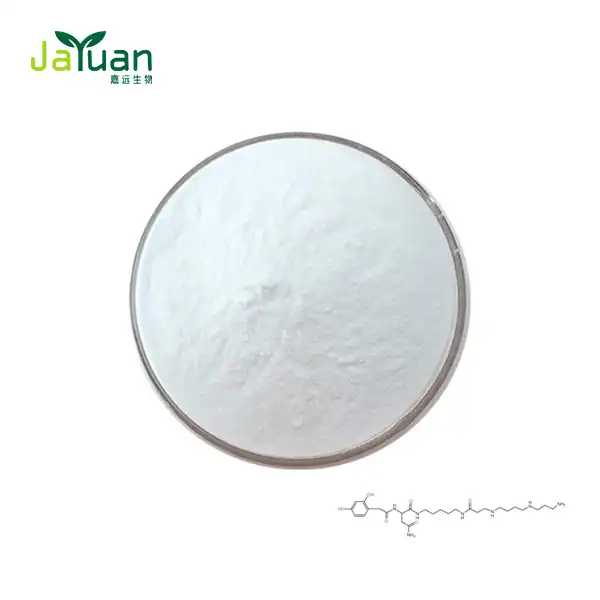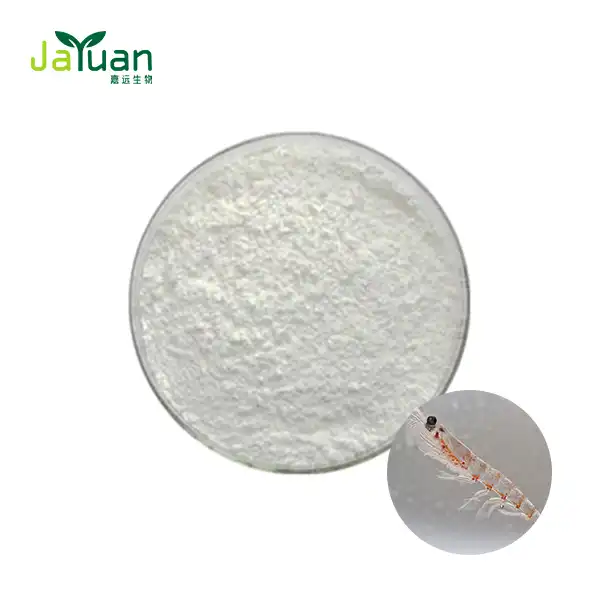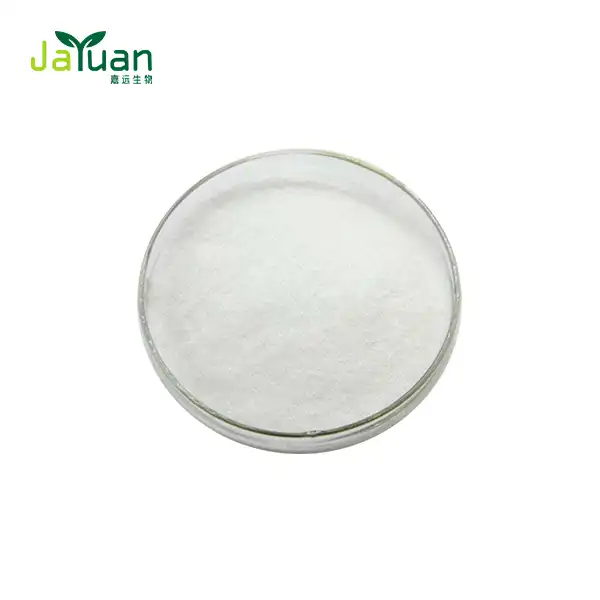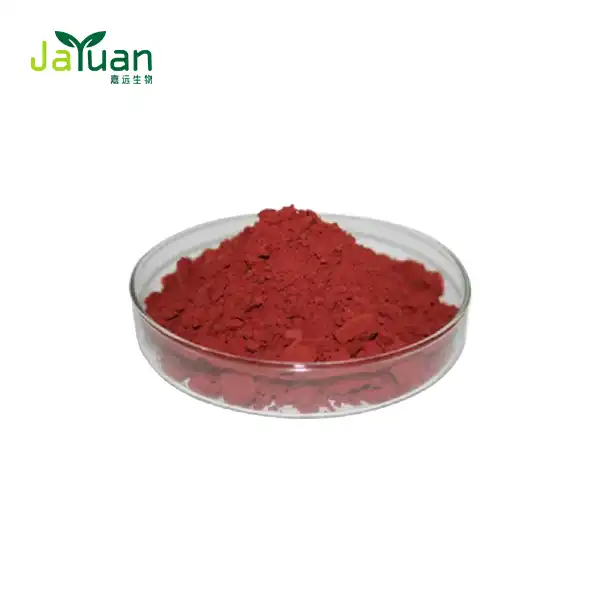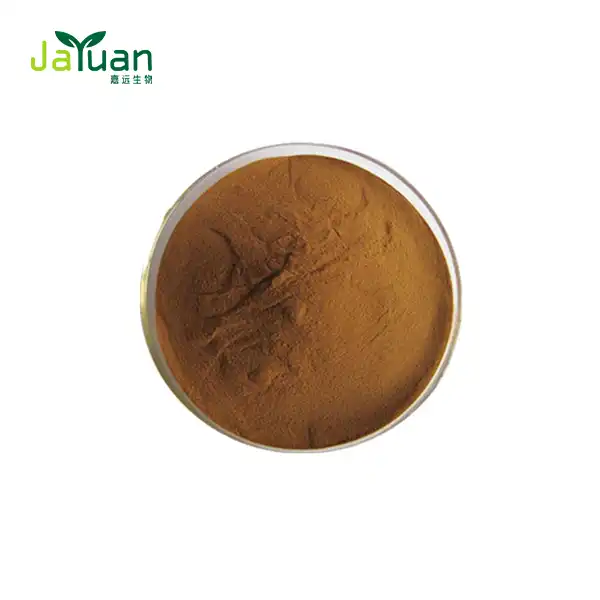Can lichen be used as an antibiotic?
In the world of natural remedies, lichen has been gaining attention for its potential medicinal properties. As researchers continue to explore alternative sources for antibiotics, the question arises: can lichen be used as an antibiotic? This entrancing organic entity, which is really a harmonious connection among growths and green growth, has been utilized in customary medication for quite a long time.Today, we'll delve into the potential of lichen extract as an antibiotic and explore its various applications in modern medicine.
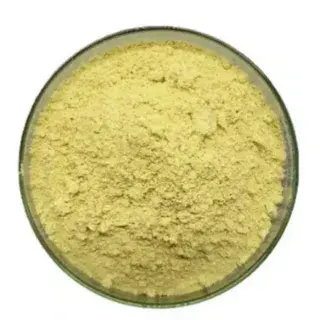
Understanding Lichen and Its Unique Properties
Lichen is a complex organism that results from a symbiotic relationship between fungi and algae or cyanobacteria. This unique partnership allows lichen to thrive in a wide range of diverse environments, from the frigid arctic tundras to the blistering deserts. The resilience of lichen is partly due to the various specialized compounds it produces, which help it withstand harsh environmental conditions and fend off potential predators.
One of the most interesting parts of lichen is its capacity to deliver auxiliary metabolites.
These builds, which incorporate lichen acids, polysaccharides, and other bioactive particles, assume a basic part in the lichen's endurance and have started impressive interest in their possible restorative properties.
Optional metabolites are not fundamental for the essential metabolic elements of lichen yet improve its flexibility and security. The significant antimicrobial, antioxidant, and anti-inflammatory properties of many of these compounds have been found.
For instance, some lichen acids exhibit potent antimicrobial activity, inhibiting the growth of various bacteria and fungi. Additionally, the antioxidant properties of some lichen compounds have the ability to neutralize harmful free radicals, thereby possibly reducing oxidative stress and the resulting damage to cellular structures. The anti-inflammatory effects of lichen extracts further contribute to their therapeutic potential, offering possibilities for managing inflammatory conditions.
The presence of these bioactive compounds makes Lichen Extract Powder a fascinating subject of study in the scientific community. Researchers are exploring its potential applications in developing new treatments and natural remedies. The ability of lichen to produce such diverse and beneficial compounds underscores its value not only as a resilient organism but also as a promising source of medicinal substances.
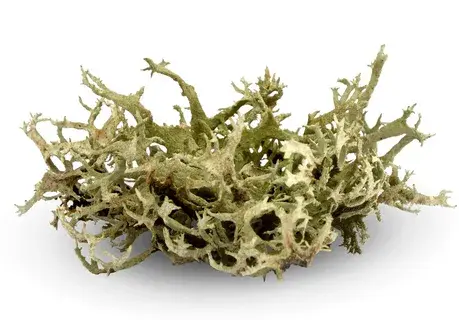
The Antibiotic Potential of Lichen Extract
Examination into the anti-infection properties of lichen separate has shown promising outcomes.A few investigations have exhibited that specific lichen species produce compounds with huge antimicrobial movement against different microbes, including microscopic organisms, growths, and, surprisingly, some infections.This expansive range viability features the capability of lichen as a significant wellspring of novel antimicrobial specialists.
For instance, it has been demonstrated that the compound usnic acid, which is found in numerous species of lichen, has potent antibacterial properties against both Gram-positive and Gram-negative bacteria.This incorporates a few anti-microbial safe strains, which are of specific worry in present day medication.The effectiveness of usnic acid against these resistant strains suggests it could be a crucial component in developing new treatments. Other lichen compounds, such as vulpinic acid and atranorin, have also demonstrated antimicrobial effects in laboratory studies. These compounds contribute to lichen’s ability to inhibit the growth of a wide range of microorganisms.
The potential of lichen extract as an antibiotic source is particularly exciting due to the growing problem of antibiotic resistance. As additional microbes foster protection from ordinary anti-microbials, the requirement for new wellsprings of antimicrobial mixtures turns out to be progressively pressing.Lichen, with its different cluster of bioactive mixtures, might actually give novel anti-toxins that microbes have not yet evolved opposition against. This could help solve the global problem of antibiotic-resistant infections by providing new therapeutic options.Progressing research is pivotal to completely comprehend and outfit the helpful capability of lichen-determined compounds.
Applications and Challenges in Using Lichen Extract
Although Lichen Extract Powder bulk has a lot of promise as a source for antibiotics, there are a few obstacles to overcome before it can be used widely in medicine.One of the principal obstructions is the sluggish development pace of lichen, which makes it hard to get enormous amounts of the concentrate.Additionally, the complex nature of lichen and its symbiotic relationship makes it challenging to cultivate in laboratory conditions.
Despite these challenges, researchers are exploring various applications for lichen extract in medicine. Some potential uses include:
- Topical treatments for skin infections
- Natural preservatives in food and cosmetics
- Incorporation into wound dressings to prevent infection
- Development of new oral antibiotics
It's important to note that while lichen extract shows promise, more research is needed to fully understand its efficacy and safety as an antibiotic. Clinical trials are necessary to determine the appropriate dosages and potential side effects before lichen-based antibiotics can be widely used in medical practice.
The use of lichen extract in medicine also raises important ecological considerations. Sustainable harvesting methods must be developed because lichen plays a crucial role in many ecosystems. This will prevent the increased interest in lichen from leading to an excessive overexploitation of these slow-growing organisms.All in all, the capability of lichen as a wellspring of new anti-microbials is a thrilling area of examination.
While challenges stay, the remarkable properties of lichen separate proposition trust in the battle against anti-microbial safe microorganisms. As we keep on investigating the restorative properties of lichen extract, we might uncover better approaches to tackle the force of these momentous organic entities to serve human wellbeing.
Assuming you're keen on looking into plant removes and their expected applications, make it a point to out to us at sales@jayuanbio.com.Our team at Xi'an Jiayuan Bio-Tech specializes in producing high-quality plant extracts and would be happy to discuss how our products might meet your needs.
References
1. Shrestha, G., & St. Clair, L. L. (2013). Lichens: a promising source of antibiotic and anticancer drugs. Phytochemistry Reviews, 12(1), 229-244.
2. Rankovic, B., & Kosanic, M. (2015). Lichens as a potential source of bioactive secondary metabolites. In Lichen Secondary Metabolites (pp. 1-26). Springer, Cham.
3. Goga, M., Elečko, J., Marcinčinová, M., Ručová, D., Bačkorová, M., & Bačkor, M. (2020). Lichen metabolites: An overview of some secondary metabolites and their biological potential. In Co-Evolution of Secondary Metabolites (pp. 175-209). Springer, Cham.
4. Boustie, J., & Grube, M. (2005). Lichens—a promising source of bioactive secondary metabolites. Plant Genetic Resources, 3(2), 273-287.
5. Molnár, K., & Farkas, E. (2010). Current results on biological activities of lichen secondary metabolites: a review. Zeitschrift für Naturforschung C, 65(3-4), 157-173.


